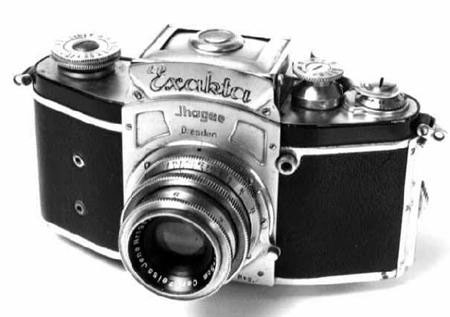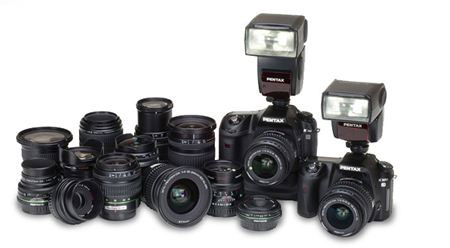Conditional sentence
In grammar, conditional sentences are sentences discussing factual implications or hypothetical situations and their consequences. Languages use a variety of conditional constructions and verb forms (such as the conditional mood) to form such sentences.
Full conditional sentences contain two clauses: the condition or protasis, and the consequence or apodosis.
If it rains [condition], (then) the picnic will be cancelled [consequence].
Syntactically, the condition is the subordinate clause, and the consequence is the main clause. However, the properties of the entire sentence are primarily determined by the properties of the protasis (condition) (its tense and degree of factualness).
In English, there are three contexts for conditional sentences.
The first context involves the possible outcome of an event that is likely to occur:
If + Present Simple/Present Progressive + Present Simple/Present Progressive/Future Simple/Future Progressive/Imperative
If + I miss the bus, + I will be late for school
The second context involves the possible outcome of an event that is less likely to occur; various sentence structures are possible for this context:
If + Present Perfect/Present Perfect Progressive/Preterite/Past Continuous + Full Infinitive + Conditional Present/Conditional Present Progressive
If + I was + to miss the bus, + I would be late for school.
In some dialects: If + Imperfect Subjunctive + Full Infinitive + Conditional Present/Conditional Present Progressive
If + I were + to miss the bus, + I would be late for school.
In some dialects: If + modal auxiliary "should" + Bare Infinitive + Conditional Present/Conditional Present Progressive
If + I should + miss the bus, + I would be late for school.
The latter two formulations, with the imperfect subjunctive or the modal construction, can be modified to use subject-verb inversion instead of the conjunction if:
Were I + to miss the bus, + I would be late for school.
Should + I miss the bus, + I would be late for school.
The third context involves the hypothetical outcome of an event that did not occur:
If + Pluperfect/Pluperfect Progressive + Conditional/Conditional Progressive/Conditional Perfect/Conditional Perfect Progressive
If + I had missed the bus, + I would have been late for school.
Here too the conjunction if can be replaced by subject-verb inversion:
Had I missed the bus, + I would have been late for school.
In each formulation it is possible to reverse the order of the clauses; however, the protasis must always follow the word "if" or exhibit subject-verb inversion:
If + I miss the bus, + I will be late for school can be adjusted to I will be late for school + if + I miss the bus.
Should + I miss the bus, + I will be late for school can be adjusted to I will be late for school + should + I miss the bus.
IF Clause Type 1
Form
if + Simple Present, will-Future
Example: If I find her address, I will send her an invitation.
The main clause can also be at the beginning of the sentence. In this case, don't use a comma.
Example: I will send her an invitation if I find her address.
Note: Main clause and / or if clause might be negative. See Simple Present und will-Future on how to form negative sentences.
Example: If I don’t see him this afternoon, I will phone him in the evening.
Use
Conditional Sentences Type I refer to the future. An action in the future will only happen if a certain condition is fulfilled by that time. We don't know for sure whether the condition actually will be fulfilled or not, but the conditions seems rather realistic – so we think it is likely to happen.
Example: If I find her address, I’ll send her an invitation.
I want to send an invitation to a friend. I just have to find her address. I am quite sure, however, that I will find it.
Example: If John has the money, he will buy a Ferrari.
I know John very well and I know that he earns a lot of money and that he loves Ferraris. So I think it is very likely that sooner or later he will have the money to buy a Ferrari.
IF Clause Type 2
Form
if + Simple Past, main clause with Conditional I (= would + Infinitive)
Example: If I found her address, I would send her an invitation.
The main clause can also be at the beginning of the sentence. In this case, don't use a comma.
Example: I would send her an invitation if I found her address.
Note: Main clause and / or if clause might be negative. See Simple Past und Conditional I on how to form negative sentences.
Example: If I had a lot of money, I wouldn’t stay here.
Were instead of Was
In IF Clauses Type II, we usually use ‚were‘ – even if the pronoun is I, he, she or it –.
Example: If I were you, I would not do this.
Use
Conditional Sentences Type II refer to situations in the present. An action could happen if the present situation were different. I don't really expect the situation to change, however. I just imagine „what would happen if …“
Example: If I found her address, I would send her an invitation.
I would like to send an invitation to a friend. I have looked everywhere for her address, but I cannot find it. So now I think it is rather unlikely that I will eventually find her address.
Example: If John had the money, he would buy a Ferrari.
I know John very well and I know that he doesn't have much money, but he loves Ferraris. He would like to own a Ferrari (in his dreams). But I think it is very unlikely that he will have the money to buy one in the near future.
IF Clause Type 3
Form
if + Past Perfect, main clause with Conditional II
Example: If I had found her address, I would have sent her an invitation.
The main clause can also be at the beginning of the sentence. In this case, don't use a comma.
Example: I would have sent her an invitation if I had found her address.
Note: Main clause and / or if clause might be negative. See Past Perfect and Conditional II on how to form negative sentences.
Example: If I hadn’t studied, I wouldn’t have passed my exams.
Use
Conditional Sentences Type III refer to situations in the past. An action could have happened in the past if a certain condition had been fulfilled. Things were different then, however. We just imagine, what would have happened if the situation had been fulfilled.
Example: If I had found her address, I would have sent her an invitation.
Sometime in the past, I wanted to send an invitation to a friend. I didn't find her address, however. So in the end I didn't send her an invitation.
Example: If John had had the money, he would have bought a Ferrari.
I knew John very well and I know that he never had much money, but he loved Ferraris. He would have loved to own a Ferrari, but he never had the money to buy one.





